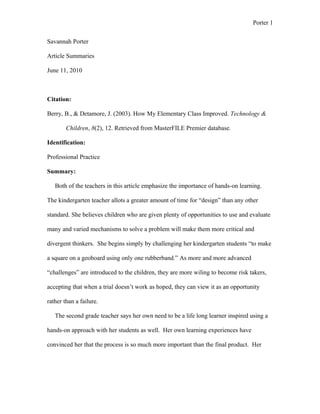This document contains summaries of 9 articles related to technology integration in education. The summaries are brief, ranging from 1 to 4 sentences and highlight the main topics and conclusions of each article. Critiques of each article are also provided, noting positive aspects as well as potential areas of improvement.









